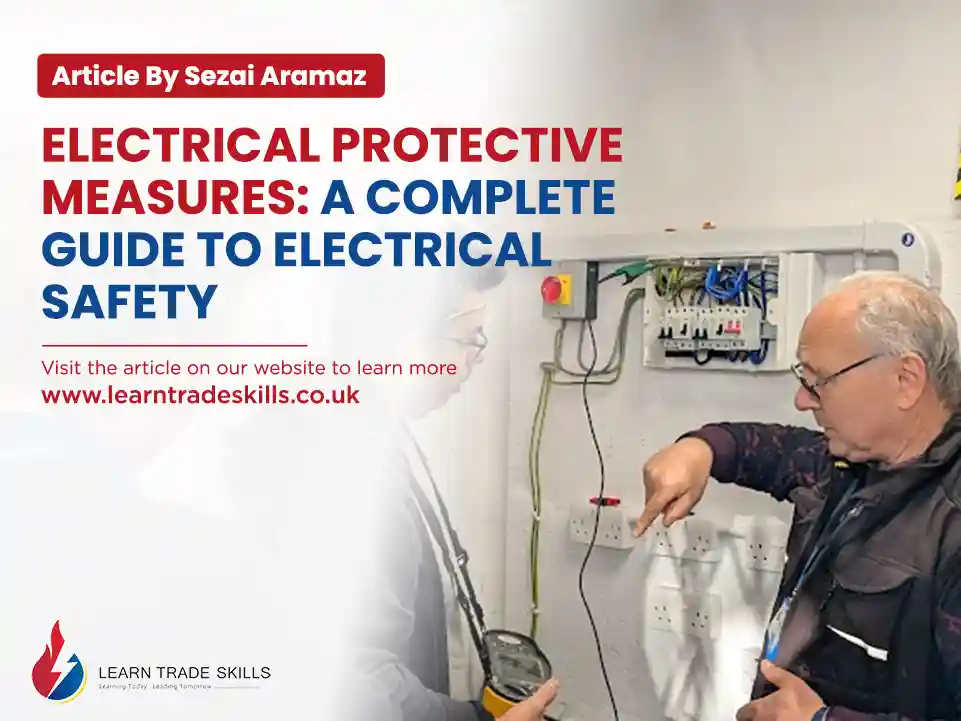
Electrical safety is a crucial aspect of any residential, commercial, or industrial environment. Without proper protective measures, electrical faults can lead to severe hazards such as electric shocks, fires, and equipment failures. Implementing effective electrical protective measures ensures the safety of individuals, prevents damage to electrical systems, and complies with international safety regulations like IEC 60364 and the National Electrical Code (NEC).
Protective measures in electrical systems are designed to mitigate risks associated with direct contact (touching live parts) and indirect contact (touching conductive parts that become live due to a fault). These measures are classified into basic protection, fault protection, and additional protection, each playing a crucial role in ensuring a secure electrical environment.
This guide provides a detailed overview of various protective measures, including automatic disconnection of supply (ADS), insulation, earthing, electrical separation, extra-low voltage (ELV) systems, and the use of residual current devices (RCDs). By understanding these principles, individuals and organisations can ensure a safe and compliant electrical system as per the 18th Edition Wiring Regulations.
Electrical protective measures are safety mechanisms designed to prevent electrical accidents. These measures include insulation, grounding, circuit breakers, and residual current devices (RCDs), among others. They ensure compliance with electrical safety standards such as IEC 60364 and NEC (National Electrical Code).

Automatic Disconnection of Supply (ADS) is a primary safety feature that disconnects the power supply when a fault occurs, reducing the risk of electrical shock and fire. Key components of ADS include:
Double or reinforced insulation prevents accidental contact with live electrical parts, reducing the risk of electric shock. This is especially used in Class II electrical equipment, which does not require an earth connection.
Electrical separation isolates a single piece of equipment from other circuits and the ground. This method is commonly applied in shaver sockets and medical equipment, reducing the risk of electric shocks.
ELV systems operate at a low voltage level, significantly reducing the risk of electrical shock. Types of ELV systems include:
ELV is commonly used in bathroom lighting, garden lighting, and low-voltage industrial applications.
Electrical safety measures involve both basic and fault protection.
Basic protection prevents direct contact with live electrical parts using:
Fault protection prevents risks associated with electrical faults through:
To enhance electrical safety, additional protection methods are applied:
Implementing electrical protective measures provides numerous benefits, including:
Electrical protective measures are essential for ensuring safety in residential, commercial, and industrial settings. By implementing automatic disconnection, insulation, grounding, and RCDs, the risk of electric shocks, fires, and equipment damage is significantly reduced. Always ensure compliance with electrical safety standards and perform regular maintenance to enhance protection.
Sezai Aramaz is the esteemed founder of Learn Trade Skills, boasting over 40 years of experience in the electrical industry in the UK. With two decades dedicated to educating future electricians, he served as an Electrical Installation Lecturer and Assessor. Aramaz's expertise and commitment have contributed significantly to the growth and proficiency of aspiring tradespeople in the field.
© Copyright Learn Trade Skills 2025
“Lorem ipsum dolor sit amet, consectetur adipiscing elit. Ut pretium tristique purus nec consectetur. Nulla feugiat eget tellus aliquam scelerisque. Sed eget luctus enim, sed mattis enim. Lorem ipsum dolor sit amet, consectetur adipiscing elit. Ut pretium tristique purus nec consectetur. Nulla feugiat eget tellus aliquam scelerisque. Sed eget luctus enim, sed mattis enim.Nulla feugiat eget tellus aliquam scelerisque. Sed eget luctus enim, sed mattis enim. Lorem ipsum dolor sit amet, consectetur adipiscing elit. Ut pretium tristique purus nec consectetur. Nulla feugiat eget tellus aliquam scelerisque. Sed eget luctus enim, sed mattis enim.”
William Goss
Electrician course
11/11/2024